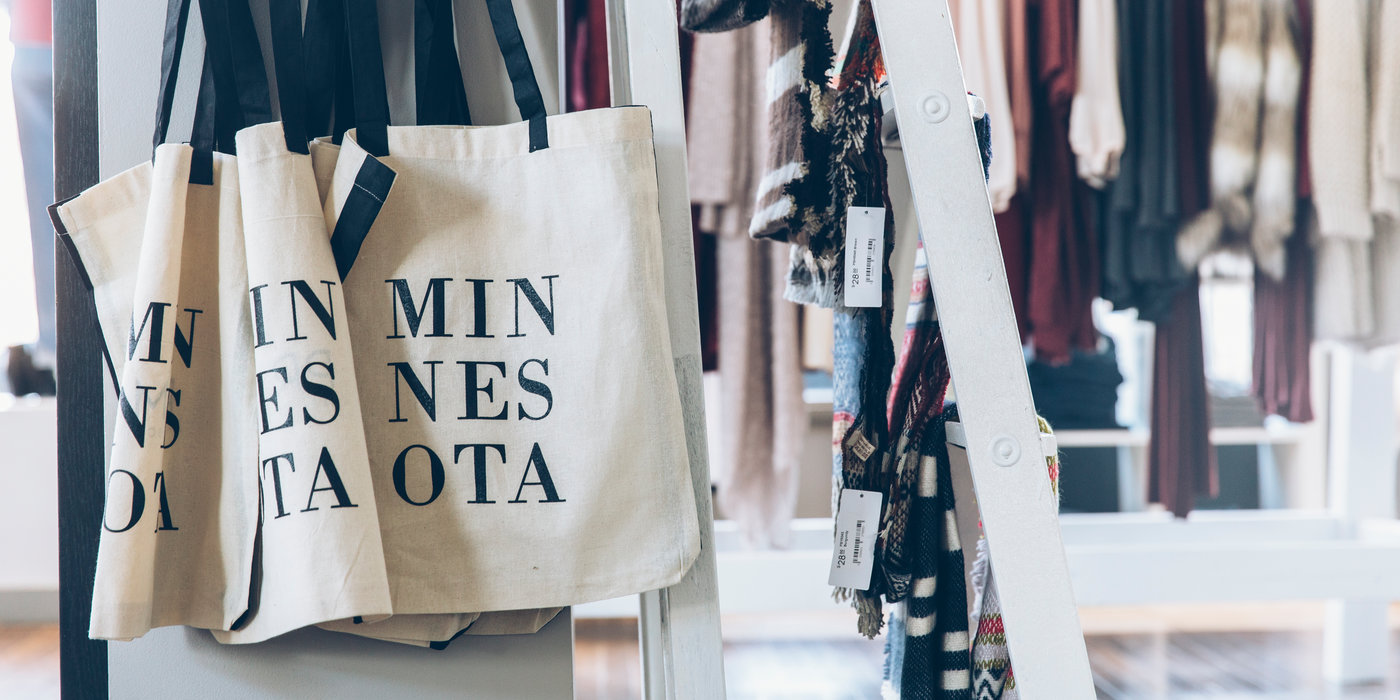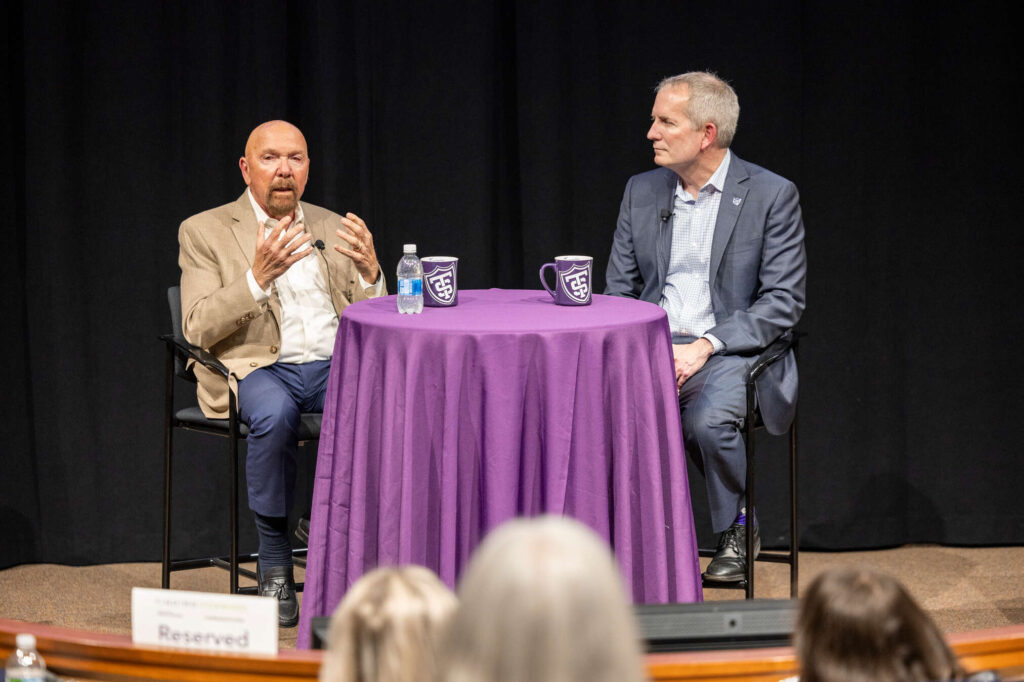Michele Henry and her business partner, Wesley Uthus, didn’t know it at the time, but the events of Thursday, Sept. 16, 2010, would be a harbinger of great things to come.
That evening marked the grand opening party of Primp, the duo’s “cheap chic boutique” for women and the first brick-and-mortar retail venture for both.
Three weeks earlier Henry and Uthus had swathed the tall plate-glass windows of their shop on the corner of Selby and Dale in St. Paul in brown paper to give them privacy while they painted the interior.
When they peeled off the paper at 5 p.m. on the day of their opening party their jaws dropped at the frightening yet thrilling spectacle: A long trail of anxious women wrapped around the block, the end out of Henry and Uthus’ line of sight.
“That’s when we both looked at each other and we just knew ... this is going to be crazy,” Henry said.
By the end of the four-hour event, nearly every item on the floor had been sold.
Because they hadn’t set up their Wi-Fi connection yet – “We thought we could casually ease in,” Henry said – Uthus and her husband had to run next door to use the Internet and have new stock overnighted so customers would be able to “Primp” themselves the following day.
Five years later, and now with 55 employees, business is still crazy ... and lucrative. Having expanded at a rate of just over one store per year – with locations in south Minneapolis, Woodbury, St. Louis Park, Excelsior and White Bear Lake, and a warehouse in northeast Minneapolis – Henry and Uthus were in the midst of opening their seventh location in Rochester last fall.

Thrifty at heart
Henry and Uthus’ unintentional tactic may have reeled in the initial batch of customers, but it’s their collective eye for fashion and hometown-girl savviness for the Midwest approach to shopping that accounts for Primp’s loyal, and growing, clientele.
“I know some people go crazy over designer handbags, but who has $2,000 to spend on a bag? We created Primp to fill the void on the flip side. Someone might lust over a designer dress for $4,800, but we can find her something she’ll love for $48,” said Henry, a Mahtomedi native. Furthermore, she and Uthus give their shoppers credit for being smart. “A lot of our customers could buy that $4,800 dress but they choose not to. It’s a very Midwestern way of thinking,” she added.
Henry, whose most frequently asked question is “How much is it?” attributes Primp’s success to their “100 percent organic” expansion strategy. The pair opened their flagship store with just $16,000 – $8,000 a piece from their personal savings – and have been able to open each successive store with the profits of the shop before it. Not an unimpressive feat considering their first modest sales goal: to sell 11 dresses a day. Henry estimated that, these days, on a busy day, one store might sell 11 dresses in an hour.
The pair stretched their dollars by enlisting friends and family to help with the build-out. Most of the décor, even the mannequins, was purchased through Craigslist and at Goodwill, and repurposed. Uthus’ college roommate, an interior designer, designed the space.
Henry swelled with the pride of a bleeding-heart bargain shopper when she divulged that – though they could comfortably afford contractors after the success of the Selby-Dale shop – “to this day I am on Craigslist looking for deals for our next build-out.” Last week she found a cash wrap counter for $300, which she and Uthus painted and used in their Rochester store.
A 'whirlwind' decade
Henry, 31, said Primp’s swift rise to success was “such a whirlwind” that her pre-Primp days seem like a “past life ago.”
A self-professed tomboy who also loves to gussy herself up in “bodycon” dresses, Henry’s first job, astoundingly, was working in construction for her father, who owned a pool business. She began at 16 and worked seasonally throughout her time at St. Thomas. Just four years after operating a Bobcat in the dusty summer heat for the last time, she and Uthus opened Primp.
From today’s standpoint, it’s even harder for her to grasp that it was only six years ago that she met Uthus, whom she can’t imagine running a business without. A mutual friend introduced the two based on their shared background in fashion. Henry’s is in apparel design and fashion merchandising (through St. Catherine University via the ACTC exchange program) with a minor in business, while Uthus studied fashion at the University of Minnesota.
The two first met for coffee at the Purple Onion Cafe in Minneapolis, Henry remembered, just “to chat and swap war stories about trying to start apparel design businesses.” (Right out of school Henry had tried her hand at producing and selling a whole-sale clothing line to retailers, but “it didn’t take. The recession was on the horizon and I didn’t have the funds to mass produce my designs,” she said.)
Henry recently had quit her sales job at a small boutique in St. Paul to assess her career path. Bartending provided easy cash to pay her bills and have a more flexible work schedule. Meanwhile, she bought a screen printer on Craigslist when she saw an opportunity to market T-shirts to University of Minnesota students, particularly sororities, fraternities and student groups.
Tapping into her entrepreneurial spirit, she visited the university’s website and sent informational emails to every president and vice president of every student group on campus, garnering enough business to keep her busy.
Cheap chic takes root
She and Uthus hit it off so well that by the end of their three-hour coffee klatch, they’d decided to go into business together.
Uthus recalled that there was nothing formal about their business decision. “It was more like we just wanted to design together and it naturally led to a business over time,” she said.
Having met their kindred spirit in fashion, they wasted little time. The next day Henry and Uthus met again to shop for fabric, where they found beautiful leather hides. On the spot, they solidified their plan to design wallets and handbags together.
“We were both really struggling to figure out how we were going to utilize our fashion design degrees in the Twin Cities. When Michele and I got together, design was fun and exciting again, and I hadn’t felt that way in a long time,” Uthus said.
Within just a few months, they sold their handbags to Midwest retailers, and during that period they noticed a shift in the market. “Some of these higher-end retailers were just not as busy because of the recession,” Henry said. “So, we decided to create a ‘boutique-like setting with lower-price-point items and amazing customer service.’”
Tantamount to their business plan, Henry said, was driving home the “amazing customer service” aspect of an upscale boutique experience, even though nothing on their shelves would exceed $100. The lowest priced item? Eight-dollar earrings.
To that end, they got to work, but in this instance they designed not clothing, but a diva-worthy, in-store pampering experience for their shoppers. The luxurious, and free, treatment comes complete with a stylist who pulls outfits while the customer relaxes on a couch with wine or beer, and even her dog if she wishes – all locations are dog-friendly except for Excelsior.
Like high-end boutiques, their stores offer a wide selection of clothing and carry just six of each item (two apiece in sizes small, medium and large) as well as accessories and shoes. The effect on the floor plan is decidedly bright, open and urban chic.
Although Henry can’t spend as much time in store as she used to, she tries to visit each one on a rotational basis as often as she can, because the boutique experience is also about community. Shortly after opening the Excelsior shop, that part of Primp’s mission sunk in deeper when two women in their early 20s walked in looking for bright pink dresses.
“They were the sweetest girls,” Henry remembered. “As time went on, I kept hearing them say, ‘She would love this. She would like that,’” as one held up a scarf or shirt for the other to inspect. “I asked who they were talking about and they told me their mother loved bright pink, and they were looking for dresses to wear to her funeral.”
Henry spent an hour and a half with the girls. In their time of sadness, “they were shopping and laughing together, knowing their mother would love all these pieces. It was a touching thing to be a part of,” she said.
She and the staff made sure the girls had matching nail polish.
What's next?
Henry and Uthus’ success also meant that both finally had time to take a breather from merchandising to dive back into their love for fashion design. In the past two years, they’ve come out with two lines sold only at Primp: Local Love, screen-printed T-shirts and necklaces that pay homage to the Twin Cities and Midwest, and Henry + Martin, a women’s clothing line featuring longer hemlines – their response to the on-trend micro-skirts they were seeing a lot of at market.
Their biggest year yet was 2014, in which Primp doubled in size from three to six locations. Does Henry think of herself as a success yet?
“It’s hard to say because I’m always going to be thinking and planning for what’s next,” she said. “Right now the great test for us is seeing if Rochester gets its legs. From there the goal is to keep on expanding.”
Read more from St. Thomas magazine.













